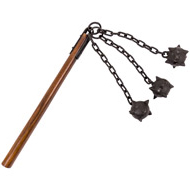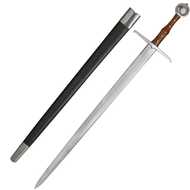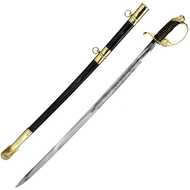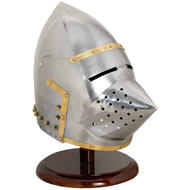Halflang Broadsword Museum Quality
It is not until the 15th century that through the examination of tomb slabs and grave effigies that we can clearly identify distinctively Scottish styled single and double handed swords.
Once such sword-often referred to as a halflang falls into this category and through this sword it is possible to see many features that are also present on the latter period highland claidheamh-mor or great sword.
With a tapering double edged blade and a socketed guard- from which langlets ie. Short strips of metal projecting from the centre of the guard area down the blade. The quillions of the halflang are angled downwards in the direction of the blade and complete the look of this distinctive style of sword. Pommels are of disc type and often have a concave face to them. In the halflang sword it is possible to see a uniquely Scottish design that has all of the features and handling characteristics of the other swords in use throughout the rest of Western Europe.









